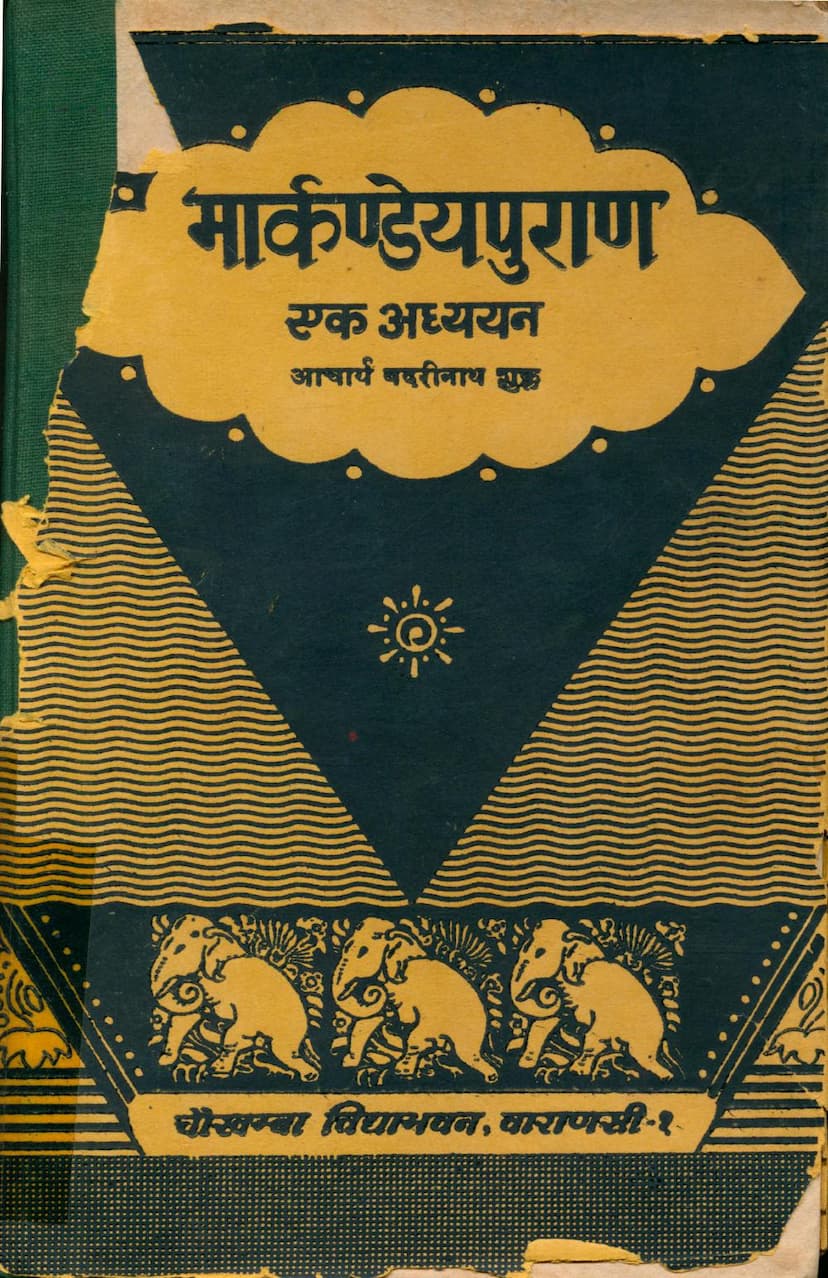Markandeya Puran Ek Adhyayan
Added to library: September 2, 2025

Summary
Here's a comprehensive summary of the provided Jain text, "Markandeya Puran Ek Adhyayan" by Badrinath Shukla, based on the provided pages:
This book, "Markandeya Puran Ek Adhyayan" (A Study of the Markandeya Purana) authored by Acharya Badrinath Shukla, published by Chaukhambha Vidyabhavan in Varanasi, is a detailed exploration of the Markandeya Purana and the broader concept of Puranas within Indian religious literature.
Core Themes and Structure:
The book begins by establishing the significance and characteristics of the Sanskrit language and then delves into the paramount importance of Puranas in Sanskrit literature. It systematically outlines the classification, content, and philosophical underpinnings of the Puranas, with a particular focus on the Markandeya Purana. The author then proceeds to provide an extensive, chapter-by-chapter summary of the Markandeya Purana's narratives and teachings.
Key Highlights:
- The Nature of Puranas: The text defines Puranas as containing five principal topics: creation (sarga), secondary creation (visarga), genealogies of dynasties (vamsha), periods of time known as manvantaras (manvantara), and the history of these dynasties (vamshanucharita). It cites various Puranic sources to establish the antiquity and divine origin of the Puranas, often linking them to the Vedas and the breath of the Supreme Being.
- Classification of Puranas: The book categorizes Puranas into two main groups: Maha-Puranas (major Puranas) and Upa-Puranas (minor Puranas). It lists the eighteen Maha-Puranas, including the Markandeya Purana. It further discusses classifications based on the presiding deity (Brahma, Vishnu, Shiva) and the presence of Sattvic, Rajasic, and Tamasic qualities. The text also touches upon the concept of Purana as embodying eighteen forms of the Atman.
- The Markandeya Purana: The book highlights that the Markandeya Purana's name derives from its central narrator, Rishi Markandeya. It emphasizes the philosophical depth and the diverse narratives contained within this Purana.
- Four Foundational Questions: A significant portion of the early chapters addresses four pivotal questions posed by Jaimini to Rishi Markandeya, which form the foundational inquiry of the Markandeya Purana's discourse:
- How is the birth of the Nirguna (formless) God possible?
- How did Draupadi become the wife of five Pandavas?
- Why did Balarama have to perform penance for Brahmahatya (killing a Brahmin) during his pilgrimage?
- Why were Draupadi's five sons killed while still unmarried?
- The Four Birds: The narrative behind the answers to these questions involves four highly knowledgeable birds (Pingaksha, Vibodha, Sumukha, and Suputra) who were originally muni-putras cursed by their father Sukrish. Their story of birth and upbringing by Rishi Shamika is detailed.
- Detailed Chapter-wise Summary: The majority of the book is dedicated to summarizing the Markandeya Purana's content chapter by chapter. This includes:
- Cosmogony and Cosmology: Discussions on the creation of the universe, different types of creation (Praskrita, Vaikrita, Kaumara), the cycles of dissolution (pralaya – Nitya, Naimittika, Prakrita, Atyantika), the measurement of time (Manvantaras, Kalpas), and the structure of the cosmos.
- Genealogies (Vamsha) and Manvantaras: Extensive coverage of the lineages of various Manus, their descendants, the celestial beings, sages, and rulers associated with each Manvantara. This includes detailed accounts of fourteen Manvantaras, starting from Swayambhuva Manu and progressing through Svarochisha, Uttama, Tamasa, Raivata, Chakshusha, Vaivasvata, Savarni, Daksha-Savarni, Brahma-Savarni, Dharma-Savarni, Rudra-Savarni, Raunchya, and Bhaumya.
- Devi Tattva and the Durga Saptashati: A significant portion is dedicated to the concept of the Divine Feminine (Devi), her mystical nature, and the narrative of the Durga Saptashati (chapters 81-93). The text explains the philosophical interpretations of the slaying of demons like Mahishasura, Shumbha, Nishumbha, and Raktabija in allegorical terms representing the battle against inner vices and ego.
- The Philosophy of the Sun (Surya Tattva): The book elaborates on the significance of Surya as the primal cause of the universe, the source of light and life, and a manifestation of the supreme Brahman. It discusses the worship of the Sun and its cosmic importance.
- The Importance of Conduct and Dharma: Numerous narratives illustrate the consequences of one's actions, the importance of truthfulness, righteousness, fulfilling duties, and the detrimental effects of anger, lust, greed, and ego. Stories like those of King Harishchandra, King Alarka, and the conversations between various sages and kings emphasize ethical living and spiritual pursuit.
- The Role of Women and Family Life: The text highlights the significance of women in religious rituals and the importance of wifely devotion (pativratya) as exemplified by the story of Anasuya. It also discusses the ideal conduct of kings and householders.
- Yoga and Moksha: The book touches upon yogic practices, the attainment of liberation (moksha), and the obstacles on the path to spiritual enlightenment.
- The Origin and Transmission of Puranic Lore: The author discusses the traditional belief that Puranas originated from Brahma and were later compiled by Vyasa. The evolution and dissemination of Puranic texts through disciples like Lomaharshana are also mentioned.
Overall Significance:
"Markandeya Puran Ek Adhyayan" serves as a valuable resource for understanding the Markandeya Purana in depth. It not only provides a narrative summary but also delves into the philosophical, ethical, and mythological dimensions of the text. The author's scholarly approach, citing various scriptures and philosophical traditions, makes this a comprehensive study for those interested in Puranic literature and Jain philosophy (though the text focuses heavily on Hindu Puranic concepts, the catalog link suggests a Jain connection, which might be in the contextualization or comparison within Jainism, not explicitly detailed in the provided text).